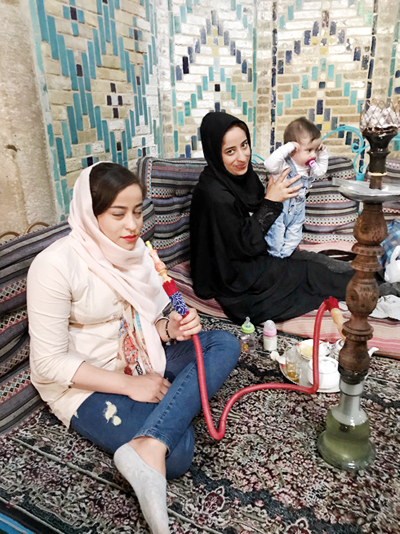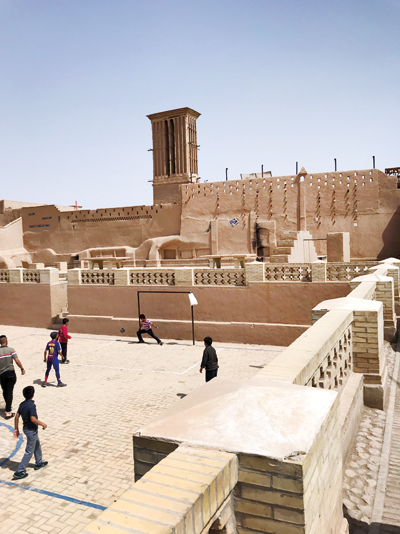Iran – Inside an ancient and still mysterious civilization

Saryazd castle dating to the Sassanid dynasty between the 3rd – 7th century
The Islamic Republic of Iran (formerly Persia), an ancient civilisation has remained a ‘dark secret’ due to adverse publicity and sanctions. With a population of 81 million, Iran is the 18th most populous country in the world. The majority of Iranians are Shia Muslims. However, the fervent religious zeal of the past decades has diminished and in a study by the University of Teheran in 2012, it was disclosed that only 5% of the population were religious.
The country’s main resources are oil, natural gas, chemicals, fruit, metal, plastics and ceramics. It is also a popular destination for cosmetic surgery. In 2017, 5 million tourists entered the country.
The Supreme Leader Ayatollah Ali Khamenei has absolute power and serves for life. There are other tiers such as the President, Guardian Council, Council of Experts, Expediency Council, Revolutionary Guards and Parliament. The government is a combination of democracy and theocracy established since the 1979 revolution, which ousted Shah Reza Pahlavi. President Hassan Rouhani serving a second term is considered a moderate and reformist and was instrumental in forging relations with the West, and securing the nuclear deal to assist the struggling economy.
Whilst in Teheran, I visited The Central Bank to see the magnificent ‘National Jewels’. On exhibition were the crown and tiaras worn by the former Shah and his wife, his ceremonial sword, the famous pink diamond, brooches, vases, boxes, and other artefacts studded with jewels some the size of eggs. A globe studded with emeralds, rubies and diamonds was also on display, as well as the famed Peacock Throne. The former Shah left the jewels with the nation when he and his wife went into exile. The brochure draws attention to the country’s colourful history and the tears of the oppressed.

A place for young families to relax: A Tea House in Kerman
The carpet museum, a project of the Shah’s wife Farah Diba in the shape of a concrete loom exhibited 40 exquisite ancient carpets. There’s also the National Museum that houses pre-Islamic and Islamic artifacts. There were reliefs and statues from Persepolis, ancient pottery, exquisite ceramic ware, gold trinkets and a blue tiled Meherab amongst the exhibits.
Golestan Palace, one of the oldest buildings in the city and a World Heritage site was built in the 15th century during the Saffavid dynasty and continued during the Zand and Qajar dynasties. The ‘Marble Throne Terrace’ where the kings were crowned is made out of yellow marble. The ‘Brilliant Hall’ is modelled on Versailles. The outer walls of the large palace are covered with intricate mosaic work.
Nasser ed Din Shah was the first monarch to travel overseas; he also sent students for studies overseas and during his rule introduced democracy. A parliamentary system was established in 1906 but this eroded his power. He was later assassinated when on pilgrimage.
The iconic Azadi Tower or Freedom Tower built in 1971 is situated in the western part of the city and was built to commemorate the Imperial State and given the present name after the revolution.
I flew to Kerman, an ancient trading route between Persia and India and spent two days exploring the city with its 14th century Friday Mosque, Masjed-e Jom’eh built during the Muzaffarid dynasty and tiled in varying shades of blue. I learnt that the largest Iwan pointed in the direction of Mecca, and about the squinches of upper angles in a square room that held up the large dome. Each city we visited had its own Friday Mosque and the architects varied the intricate mosaic and ceramic tiles in different colours but predominantly blue, with the Kufic calligraphy as an ode to God. The prayer hall (from the mihrab where the preacher gave his sermon) was strewn with rich Persian carpets in colours of red and blue.
The Saffavid-era Ganjali Khan complex is named after a former Governor and consists of a bazaar, a former bath house, caravanserai and a tea house where young families relaxed sipping tea, eating sweets, smoking hookahs whilst listening to the local musicians. The Bath House with its wax figures depicted the various uses and exhibits various artistic styles.
The mud brick citadel of Rayen situated on a hill with foundations from the Sassanid era is 100 km south of Kerman and was a trading post over 1,000 years old. It is well preserved and has withstood conquests by the Arabs and natural disasters. The Governor’s, gentry, and other residential quarters are visible. There were holes in the towers to pour hot oil on invaders. In the front was a quarantine building, wells dug underground and storage facilities.

Creating ventilation: Wind Tower in Yazd
During our travels, we often lunched at mud brick caravanserais (caravan palaces), which were wayside inns patronised by commercial travellers of the Silk Route. There was a large entrance for animals to pass through and an open court at the centre. Some caravanserais in towns have been converted to commercial hubs.
Another feature of my trip was visiting the six UNESCO heritage Persian gardens in different cities with pavilions at the entrance and end. The gardens signified ‘paradise’ according to the Koran with orchards on either side, cooling pools at the centre with fountains playing, and Cypress trees and flowering plants on the sides. These gardens were formerly hunting and recreational areas and today there are a large number of Iranians picnicking.
Driving from Kerman to Yazd through the desert with a backdrop of the craggy Abroz mountains reflecting different hues with dustings of snow, we stopped at Saryazd castle after a journey of five hours. Saryazd dates to the Sassanid dynasty between the 3rd – 7th century. The castle built again using mud bricks with high towers and walls surrounded by a moat was a safe depository for valuables during wars and was sealed with the owner’s seal.
Yazd (the City of Wind Catchers) in a desert is a World Heritage Site. With industrialization and IT, it is now prosperous. The city was the centre for Iran’s Zoroastrian community. However, with the rise of Islam, a tax was imposed on the Zoroastrian community, which was later rescinded after consultations with the king in the 19th century. Most Zorastrians migrated to India during this era, but there are still 2 million left with representation in Parliament. I climbed the steep hill to the ‘Tower of Silence’ on the outskirts of the city where bodies of the dead were laid on a circular platform to be fed to the vultures thus preventing contact with earth and fire considered sacred.
Prior to Islam, Zoroastrianism founded by Zarathustra 3,500 years ago held sway in Iran. The Fire Temple I visited was built in 1934 and houses the ‘victorious flame’ in existence since 470 AD. At the entrance to the temple is an ancient symbol of a man sitting on three tiers of feathers holding a ring signifying loyalty. The tiers indicate the importance of thinking, speaking and acting decently. No admission is allowed in the inner sanctum where the fire burns except for the priest wearing a mask.
Wind towers were an early architectural development in Iran to create ventilation for buildings and I visited Dowlat Abad (again a UNESCO listed site) set in a large stately garden with the feature. This feature was used in desert towns where houses were closely built with high ceilings, and small windows that cooled the rooms near the tower. Another feature of homes as we walked through passages of mud brick in the UNESCO site were the two separate knockers for visitors, which indicated whether the caller was a male or a female.
(More next week)


